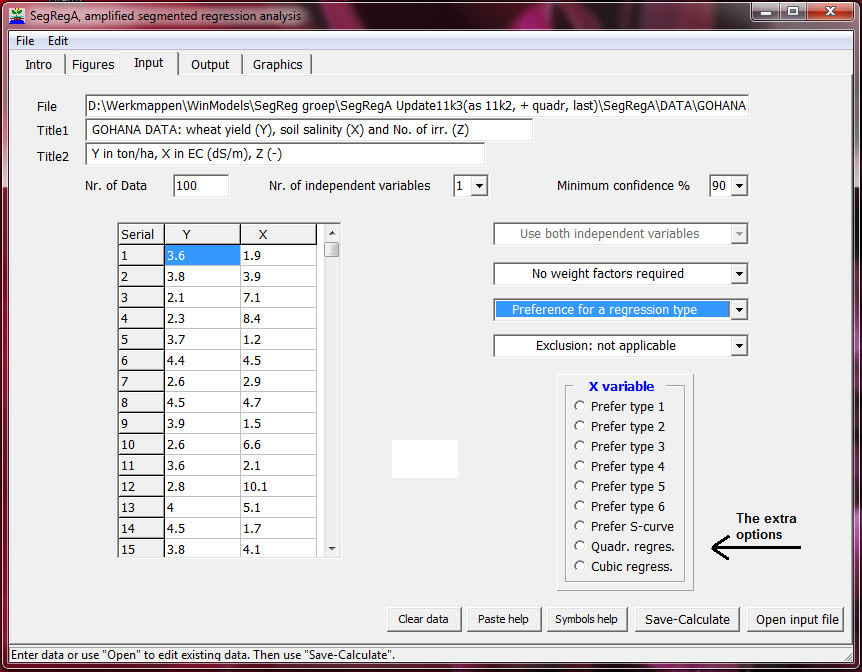| Download: SegRegA Go to: Software & models General articles & manuals Artiículos (in Spanish, en Español) Published reports & cases Particular reports & cases FAQ's & answers Home page |
Examples of generalized quadratic and cubic regressions :
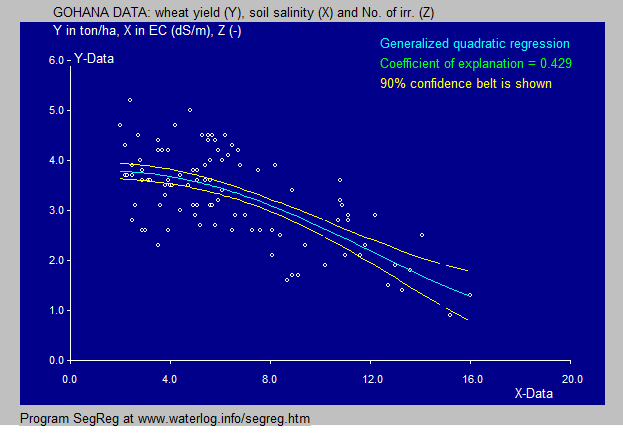
|
|
The quadratic equation in the wheat example is found
by a transformation raising X to the power 2 so that
W = X ^ 2 and then performing a
quadratic regression of Y on W with the result: Y = 0.000126 W ^ 2 - 0.0120 W + 3.80 and hence: Y = 0.000126 X ^ 4 - 0.0120 X ^2 + 3.80 which is now no longer a second degree (quadratic) equation, but a 4th degree one. |
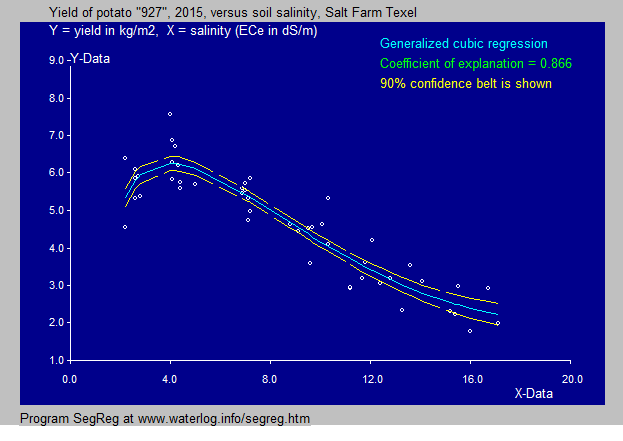 |
|
The cubic equation in the potato example is found by
a transformation raising X to the power 0.5 so that
W = X ^ 0.5 and then performing a
cubic regression of Y on W with the result: Y = 0.537 W ^ 3 - 4.70 W ^ 2 + 11.2 W + 1.84 and hence: Y = 0.537 X ^ 1.5 - 4.70 X + 11.2 X ^ 0.5 + 1.84 which is now no longer a third degree (cubic) equation. |
| At a certain stage, the program asks if the transformation is OK (see figure below). If the answer is "No" then the standard quadratic or cubic regression will be made. Otherwise, the transformation may occur and it can be noted that the resulting equation is no longer a standard quadratic or cubic function, but that the exponents of the X-values have been changed to other values than the standard 3, 2 and 1. They have been generalized and the goodness of fit has increased. |
 |
The polynomal case of 1 dependent variable (Y) and 2 independent variables (X and Z) |
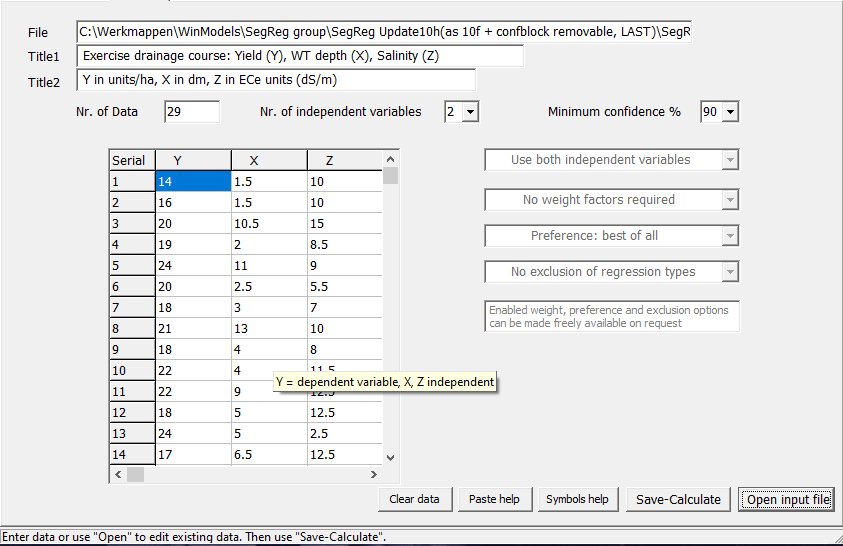 |
| Screen print of the input menu for the polynomial case (1 dependent variable (Y) and 2 independent variables (X and Z). |
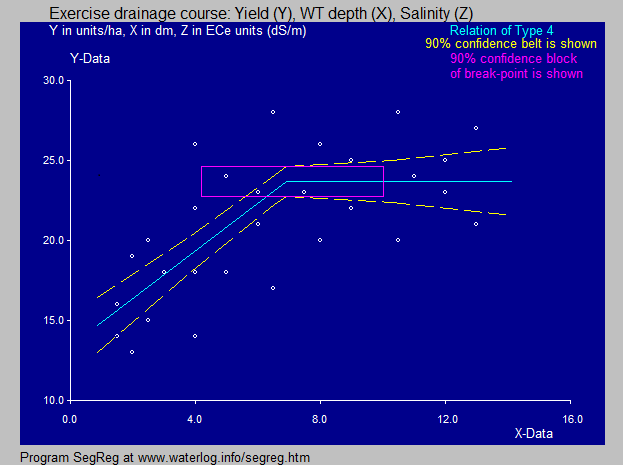 |
|
The SegReg program found that the 1st independent
variable (X) has a higher coefficient of
explanation than the second (Z). Therefore the first
segemented regression is made for X. |
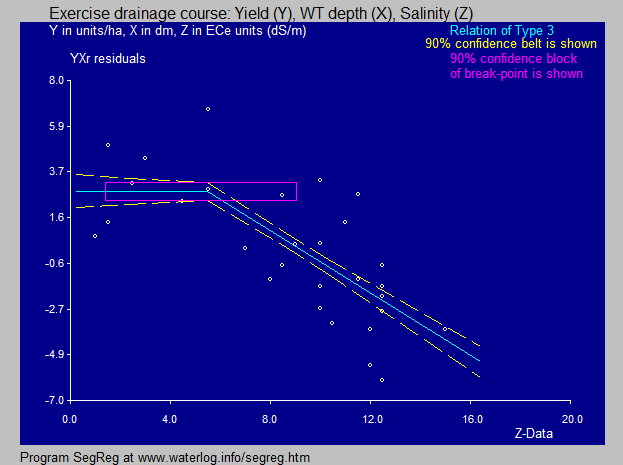 |
|
The the residuals of Y after the regression on X
are used with a segmented regression on the second
variable (Z). The mathematical combination of the first and second analysis yields equations of the type Y = A.X + B.Z + C (polynomial) |
